Her på Blåvand's blog bringes korte nyheder i dagbogsformat om livet og hændelser på fuglestationen.
Se indlæg fra måned: feb. (4)mar. (31)apr. (30)maj (30)juni (15)juli (19)aug. (21)sept. (30)okt. (31)nov. (30)dec. (2)
Without the Oystercatchers, the counts would be close to zero
The NW and W winds have kicked in on the last two days. The result: only a few Oystercatchers and less than 400 waders in total. I'm taking advantage of the poor migration to make some progress on the analysis of the waders data we have collected since 1963. This year, the migration seems to be starting earlier than usual, and that's not necessarily a good sign. My first aim in the analysis was to calculate some mooving means on the counts, focusing on the age of the birds, to see when the juveniles start to migrate. Below, an example for the Dunlin population, in 2023.

Good migration day and nice evening with the guests!
About 1300 waders today, which was not expected because the weather forecast wasn't good.
Oystercatchers : 423
Dunlins : 306
Red Knots : 438
Sanderlings : 140
Curlew Sandpipers : 2
Golden Plovers : 8
Whimbrels : 5
Curlews : 4
Bar-tailed Godwits : 37
Redshanks : 28
Ruddy Turnstones : 29
Spotted Redshanks : 5
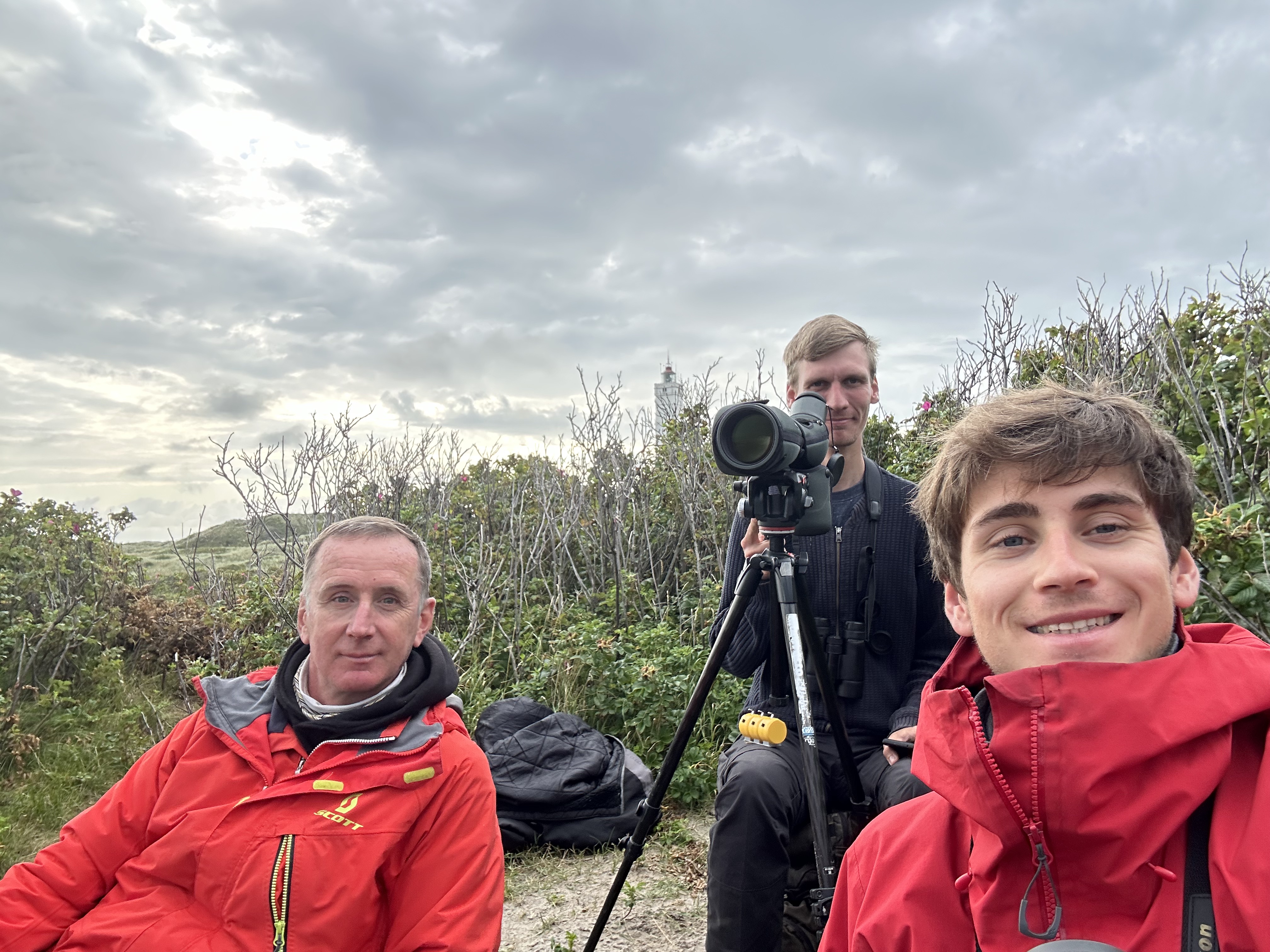 David, Théotim and Théotim's father at the observation spot
David, Théotim and Théotim's father at the observation spot
The weather is also really good for mushrooms so Kim and Maria, who were there for 4 days, prepared a verry good dinner. Bent, the former manager of the station, and his wife, joined us for this convivial moment.

Rain stopped but migration too
Nothing special to report today, except that it was the poorest day of the season in terms of observation, with fewer than 100 waders in total. I took advantage of the lack of waders to introduce my parents, who were visiting for a few days, to birdwatching. They enjoyed it so much that they asked me to do it again tomorrow!
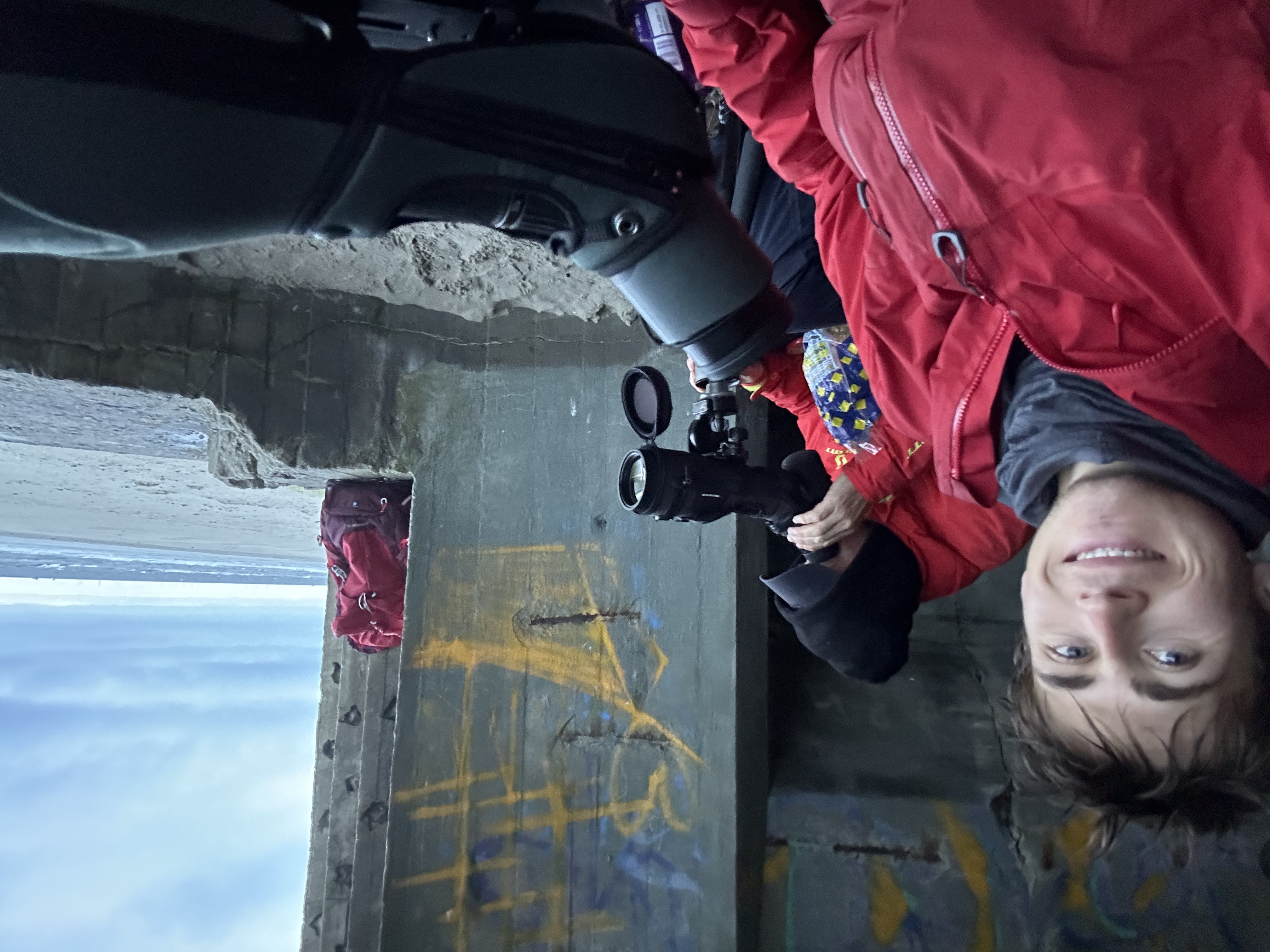
Over 4000 trækkende vadere i dag!
Som spået blev det i dag en god vaderdag. Jeg havde dog ikke forventet at den ville blive SÅ god! Der var optimale betingelser med frisk østenvind, god sigt og varme, men datoen er måske lidt tidlig til hvad jeg ville forvente blev en helt stor dag.
Allerede ved obsens start kl. 5.00 kom der småflokke af vadere, både alm. ryle og islandsk ryle og deriblandt brushane, krumnæbbet ryle mv. Det tegnede til at blive en god dag. Antallet svingede fra time til time, men der kom en lind strøm af alm. ryle og pæne flokke med islandsk ryle gennem hele morgenen. Jeg fik selskab af Claus Møller, som havde hørt at det i dag blev godt.
Det blev til i alt 4.579 trækkende vadere, fordel således:
| Almindelig Ryle | 2502 |
| Islandsk Ryle | 1020 |
| Strandskade | 597 |
| Lille Kobbersneppe | 63 |
| Rødben | 62 |
| Sandløber | 59 |
| Krumnæbbet Ryle | 57 |
| Strandhjejle | 46 |
| Stor Præstekrave | 44 |
| Stenvender | 29 |
| Hvidklire | 26 |
| Dobbeltbekkasin | 23 |
| Mudderklire | 14 |
| Hjejle | 7 |
| Småspove | 7 |
| Brushane | 6 |
| Dværgryle | 6 |
| Storspove | 5 |
| Tinksmed | 3 |
| Sortklire | 2 |
| Svaleklire | 1 |
Der var ikke de store overraskelser imellem, men en dag med i alt 21 trækkende vadefuglearter er sgu altid en god dag. Det var rart endelig at se lidt dværgryler og en god sjat krumnæbbede ryler.
På stranden rastede der 3-4000 måger og terner, men de var ikke til at arbejde med da der var meget lavvandet. Der kom en del måger flyvende til fra nord tidlig morgen, hvor der kunne have været mange trækkende hættemåger imellem, men det var der ikke tid til med alle de trækkende vadere. Det er svært at dække kun 1,5-2 mand, når da allesammen også skal aldersbestemmes.
I næste uge svinger vinden i en mere vestlig retning, men i morgen kunne stadig blive god. Det er det ofte dagen efter en god dag. Der skal dog komme lidt varme sidst på ugen, så mon ikke vi oplever gode dage der igen.
Første ringmærkning i efteråret
Så ramte vi 20. juli og det betyder start på ringmærkningssæsonen. Desværre har der ikke været samme tilstrømning af ringmærkere som i foråret og vi ser ind i en sæson med mange huller. Derfor bliver dagens ringmærknings også en enlig svale indtil 5. august, hvor Freya kommer en ugens tid. Efter det skal vi helt hen til 3. oktober før der kommer fast ringmærkning.
Dagens mærkning var en stille omgang med i alt 12 nye fugle:
Rødhals 1
Solsort 2
Gulbug 1
Gransanger 1
Løvsanger 3
Blåmejse 2
Korttået træløber 1
Skovspurv 1
Dagens fugl var klart korttået træløber, som kun fanges meget fåtalligt i Blåvand. Fuglen var nr. 38 ringmærkning i området. Arten blev stort set aldrig fanget før 2010, men fanges nu med op til 6 fugle om året.
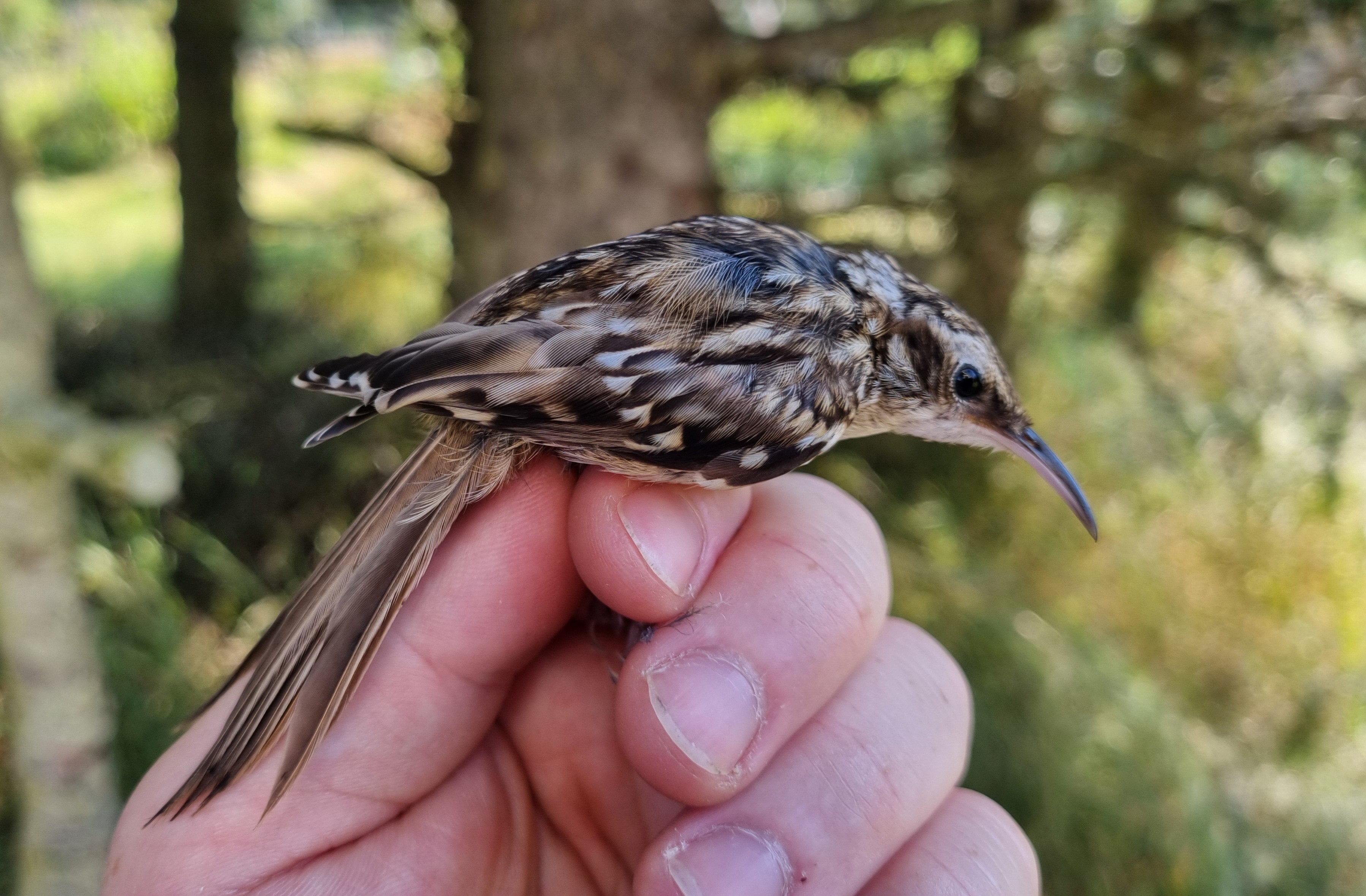
Efter en ordentlig omgang havearbejde, er det en fornøjelse at gå rundt i haverne.
På obsen havde Theo travlt med at tælle. Der var pænt gang i vaderne med over 1000 trækkende i dag. Højdesrpingeren var islandsk ryle med 357 trækkende, men også en fin dag med almindelig ryle (332) og brushane (12). Der er begyndt at komme flere krumnæbbede ryler, hvilket altid er en fornøjelse.
Theo og Suzanne er taget til København for at lege turister, men Theo er tilbage igen mandag morgen.
I morgen er undertegnede alene på obsen, og jeg tror der bliver travlt :)
No wind = no migration = nap weather
As expected, the very low wind didn't bring a lot of waders this morning. Observation was a little bit borring but the weather was so nice that we had a really good time in the dunes: the sea was so flat and beautiful, we can't complain about that!
Below: one of the few dunlins that we saw. Sanderlings were more numerous (about 90).
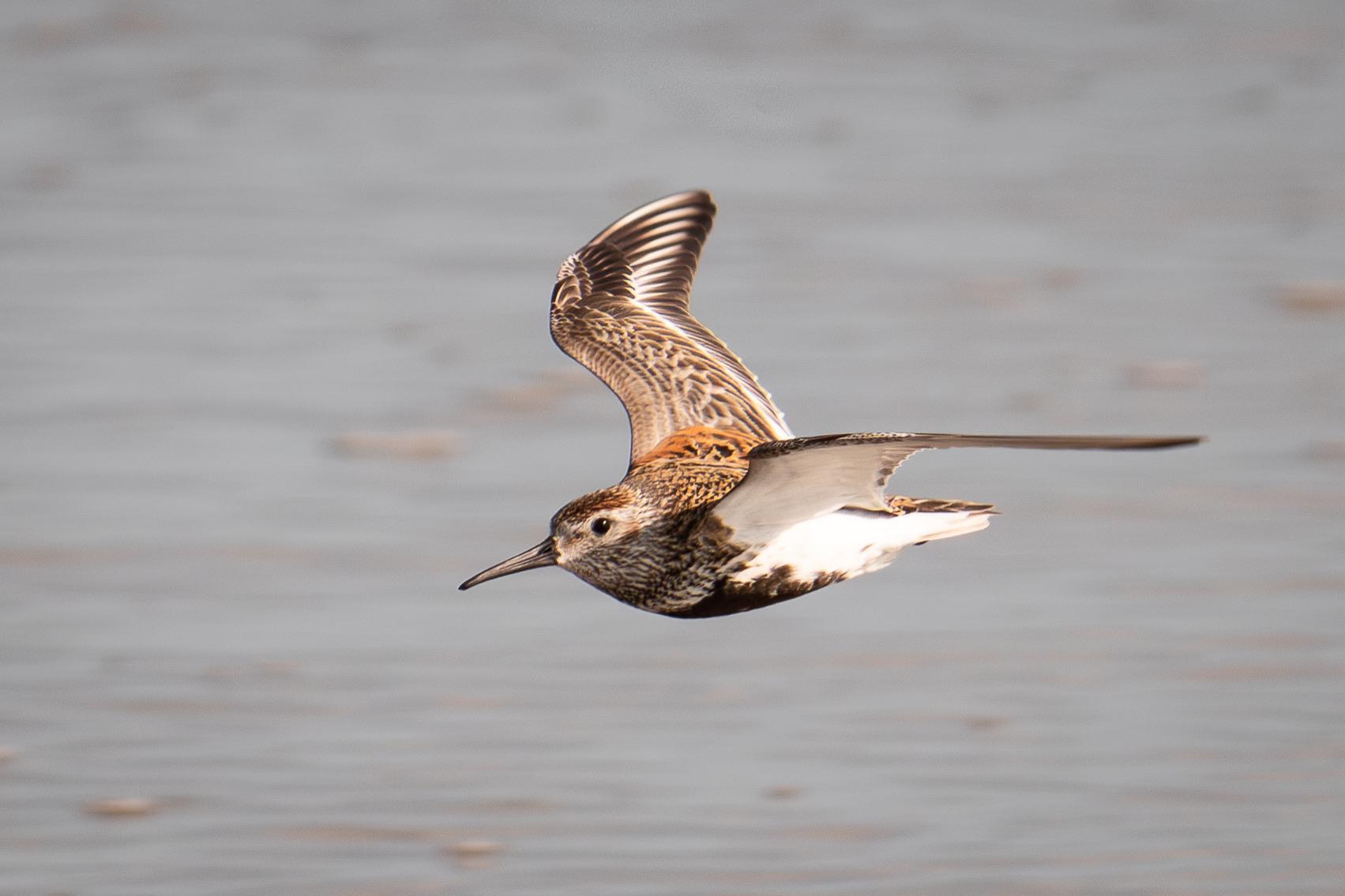
Gardening is a sport
Yesterday, Maxim took his last dinner at the station (tears). Thanks a lot for the memories, we'll miss you!

Today was a "hard work" day: after a poor observation, we cleaned all the paths in the two gardens (station + lighthouse) in order to prepare for the ringing season that starts on Saturday. Suzanne and Théotim cut all the branches and removed a lot of bulky trees, while Henrik was mowing the lawn. I think he was very happy with his new toy that he bought to replace the old lawnmower. The result is very satisfying, and we created a lot of space around the nets. The big branches we removed will be re-used to build natural walls for the observation spots, so that we will have better protection against strong winds.

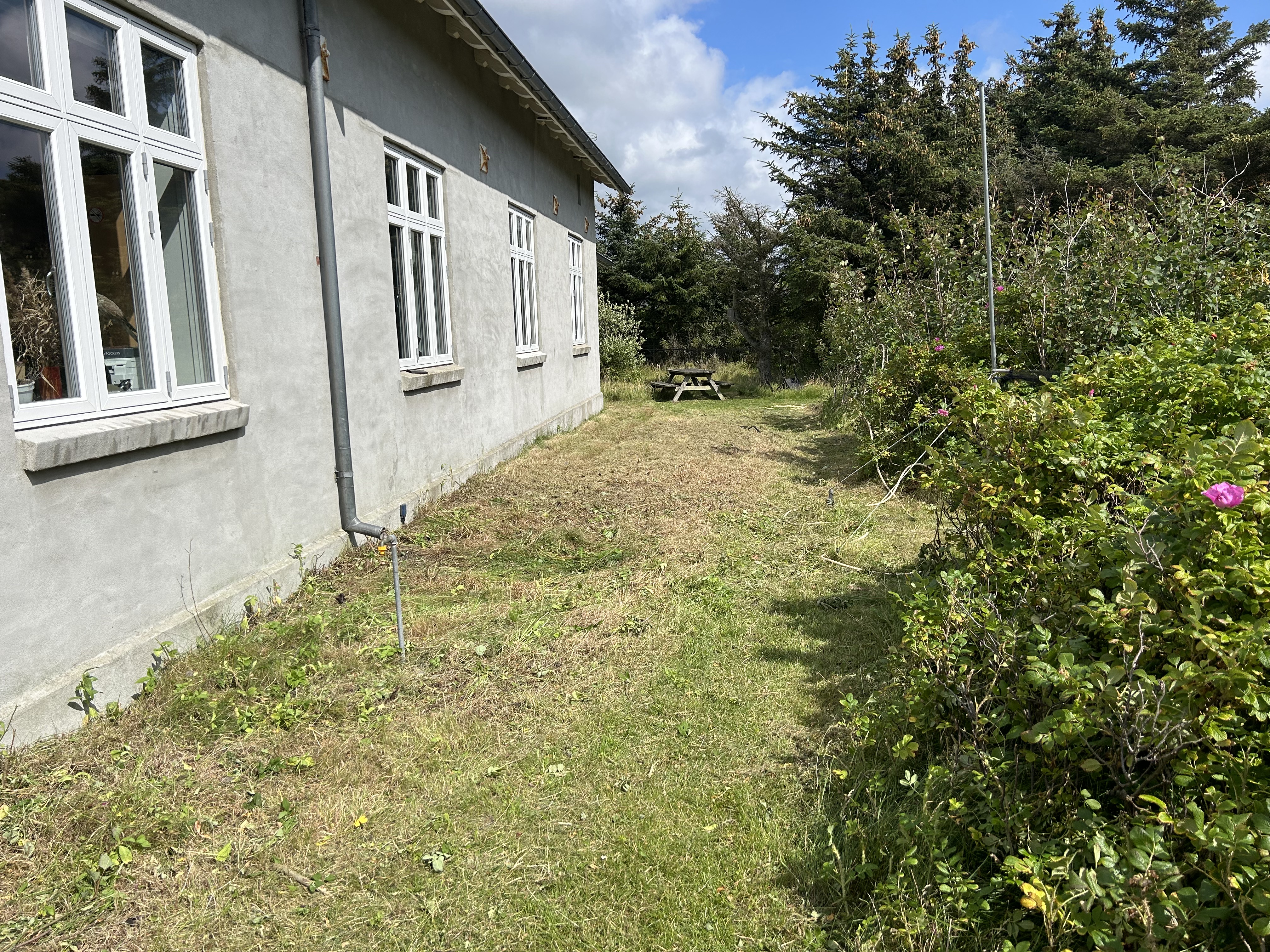


After this tiring work, Suzanne and Théotim baked cookies and went to the top of the lighthouse for the first time.
Rainy but interesting day
In the previous days, the forecast predicted a good eastern wind, and we couldn't wait for that day. Unfortunately, the rain reduced our expectations and chances of having a "1000-wader day." Only the dunlins were numerous, about 650, out of a total of 880 waders. We have counted about 5500 migrating waders since the beginning of the season (July 10).
Cool things about today: we saw the first little stint of the season, an albino oystercatcher, and an Arctic skua.
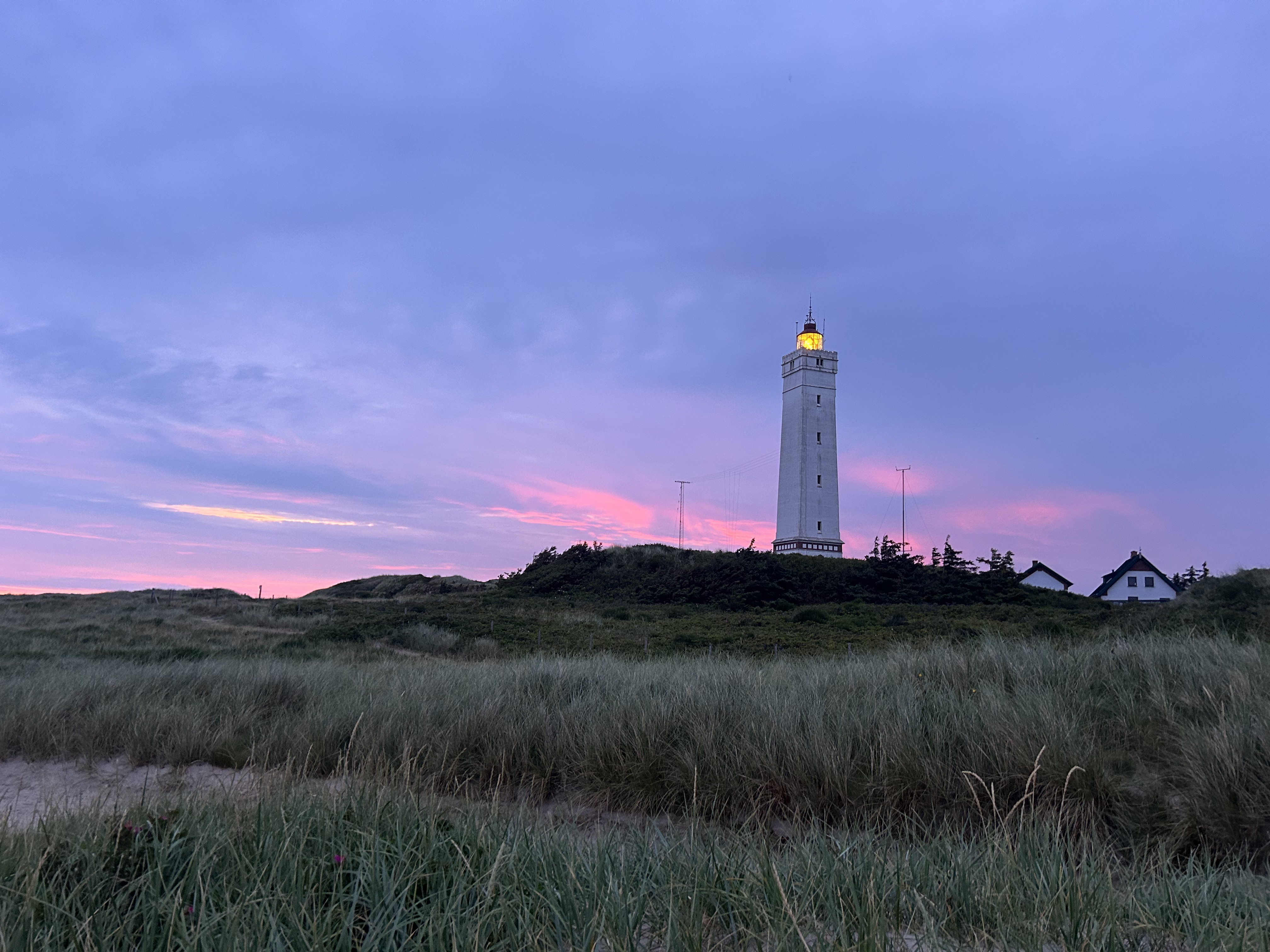
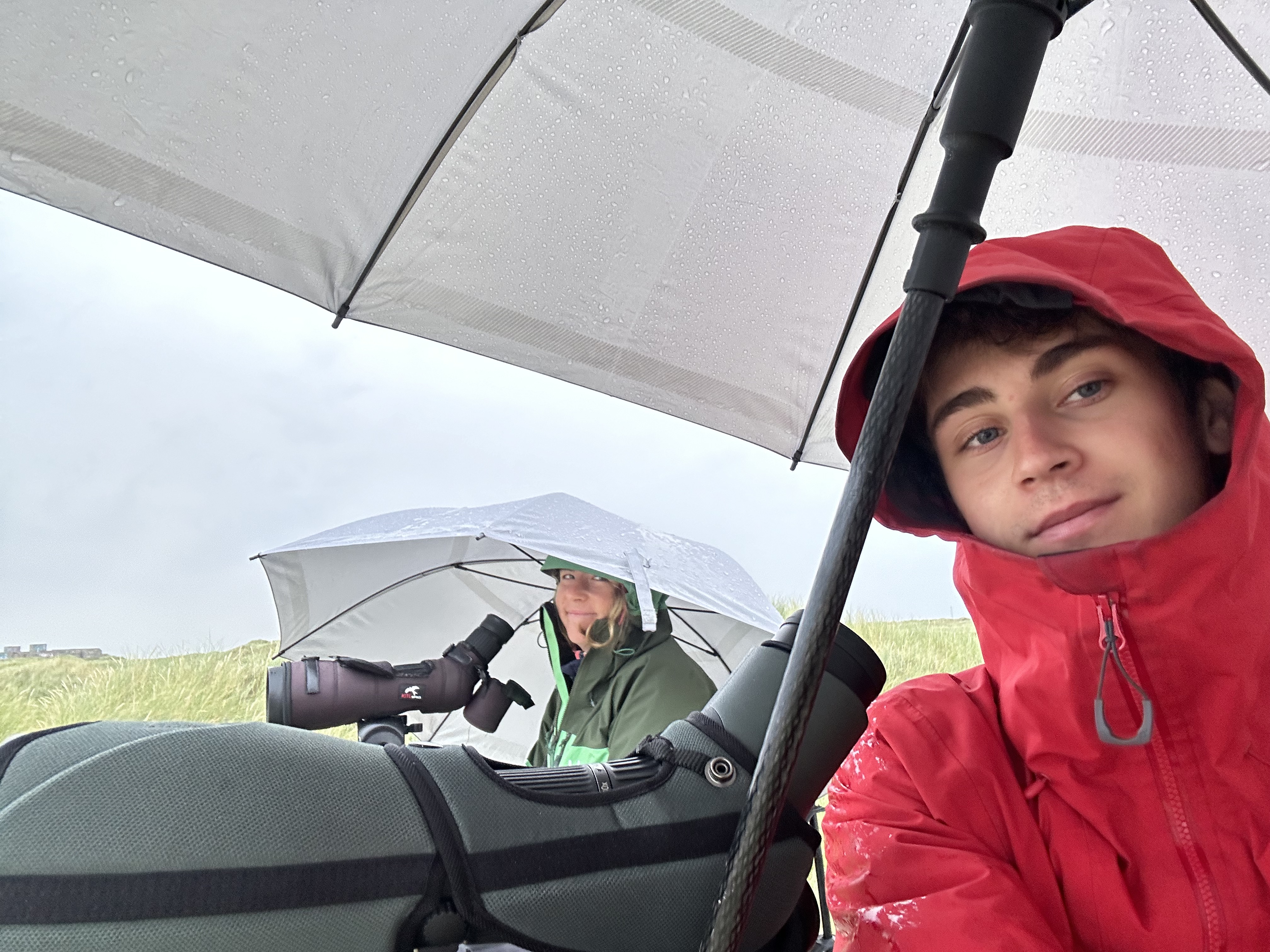
Quiet day for migration but a nice goodbye dinner for Maxim
Today, the wind was from the southwest, and we expected a bad day for migration. Unfortunately, it was. After observing more than 1,000 waders yesterday, we didn't see more than 400 today. However, it was nice to see a white-tailed eagle scaring all the gulls.
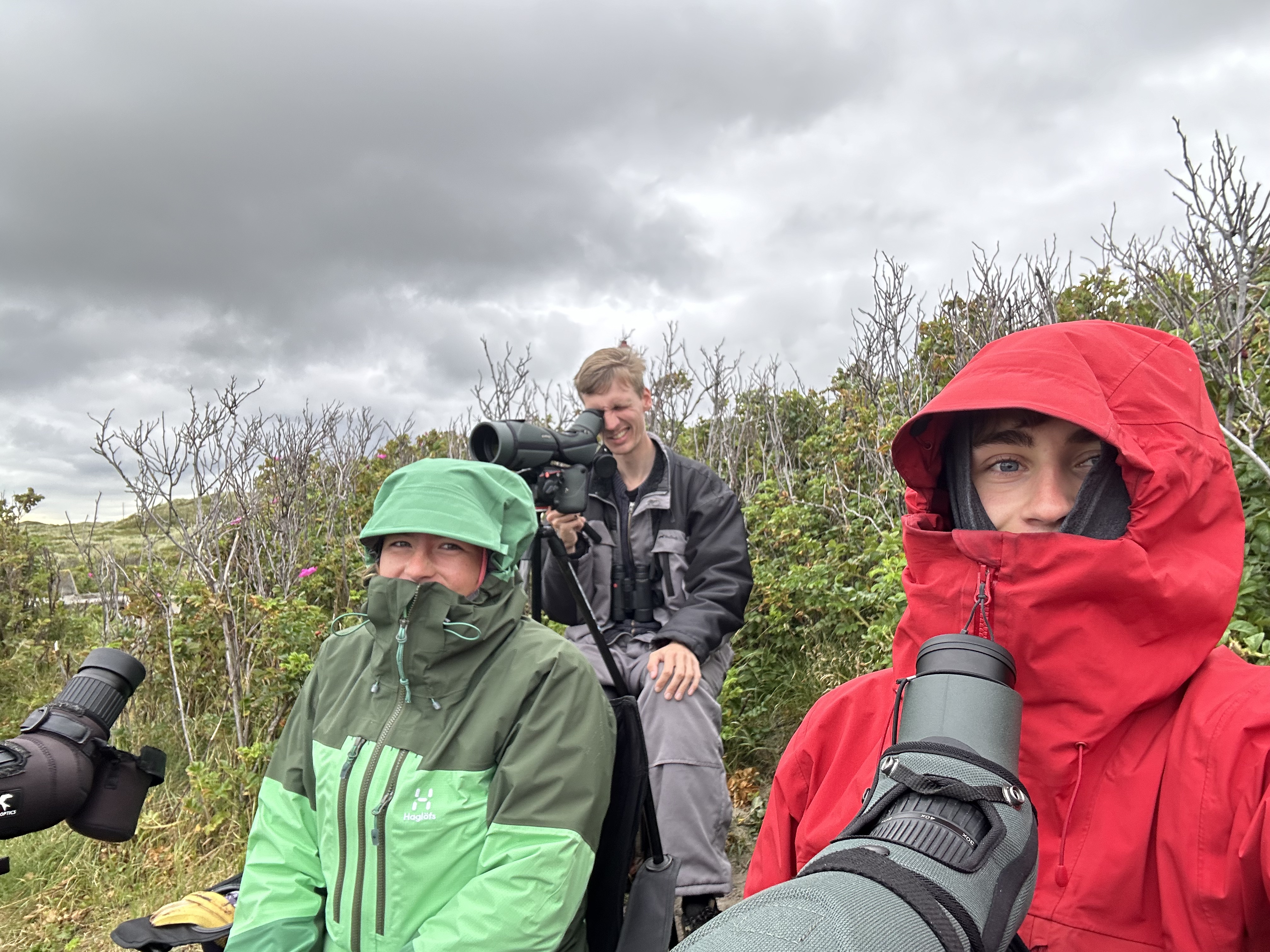
We also enjoyed a "goodbye dinner" in the city because Maxim is leaving on Thursday.

Awesome migration day and first spotted redshanks
It’s been 4 days since the autumn season started, and the waders are here! The weather is not very sunny and hot, but it’s good for migration: we've had SW, SE, and E winds in the last few days, bringing a lot of oystercatchers, dunlins, and bar-tailed godwits close to the beach. Today was a very good day, we had more than 800 dunlins and about 250 oystercatchers. There were also fewer bar-tailed godwits and curlews than on previous days, but the number of shanks and sandpipers is clearly increasing (124 redshanks today). We saw the first spotted redshanks of the season as well. In total we had about 1500 waders.
We are enjoying the results of the good work from the past few weeks, which involved cleaning and preparing all the observation spots. We created different spots adapted to each wind direction, so we can be protected by the bushes and have more comfort during observation. We also cut the grass and pruned the bushes along the paths that connect the spots to each other. See below how proud Henrik seems about the “NW wind spot”!
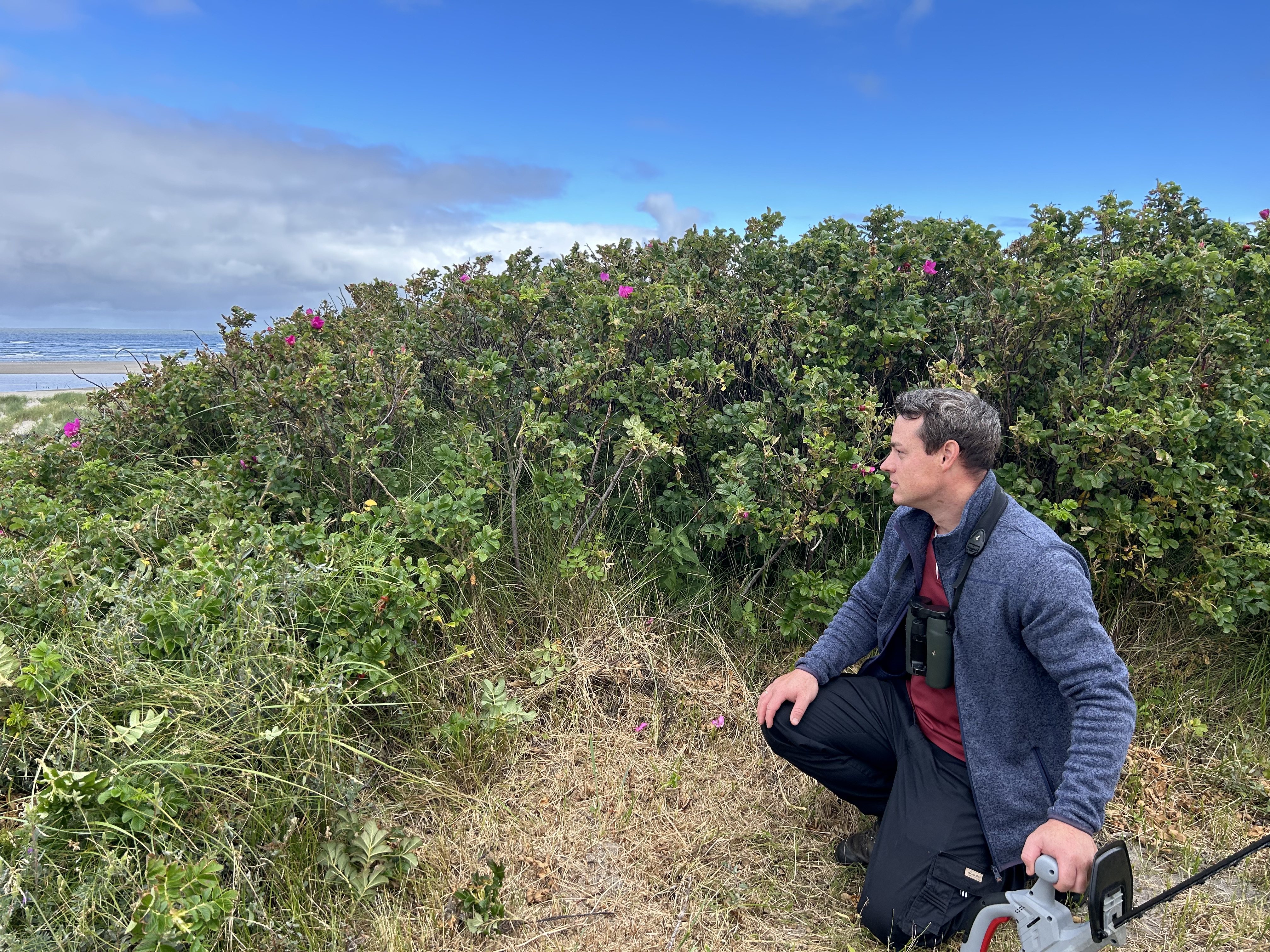
Kai, the German volunteer who joined us for the last 2 weeks, left the station yesterday. I really enjoyed sharing experiences with him and comparing the birds of our countries. It is also (and already) Maxim’s last week at the station, and we will definitely miss the incredible dinners he cooks.
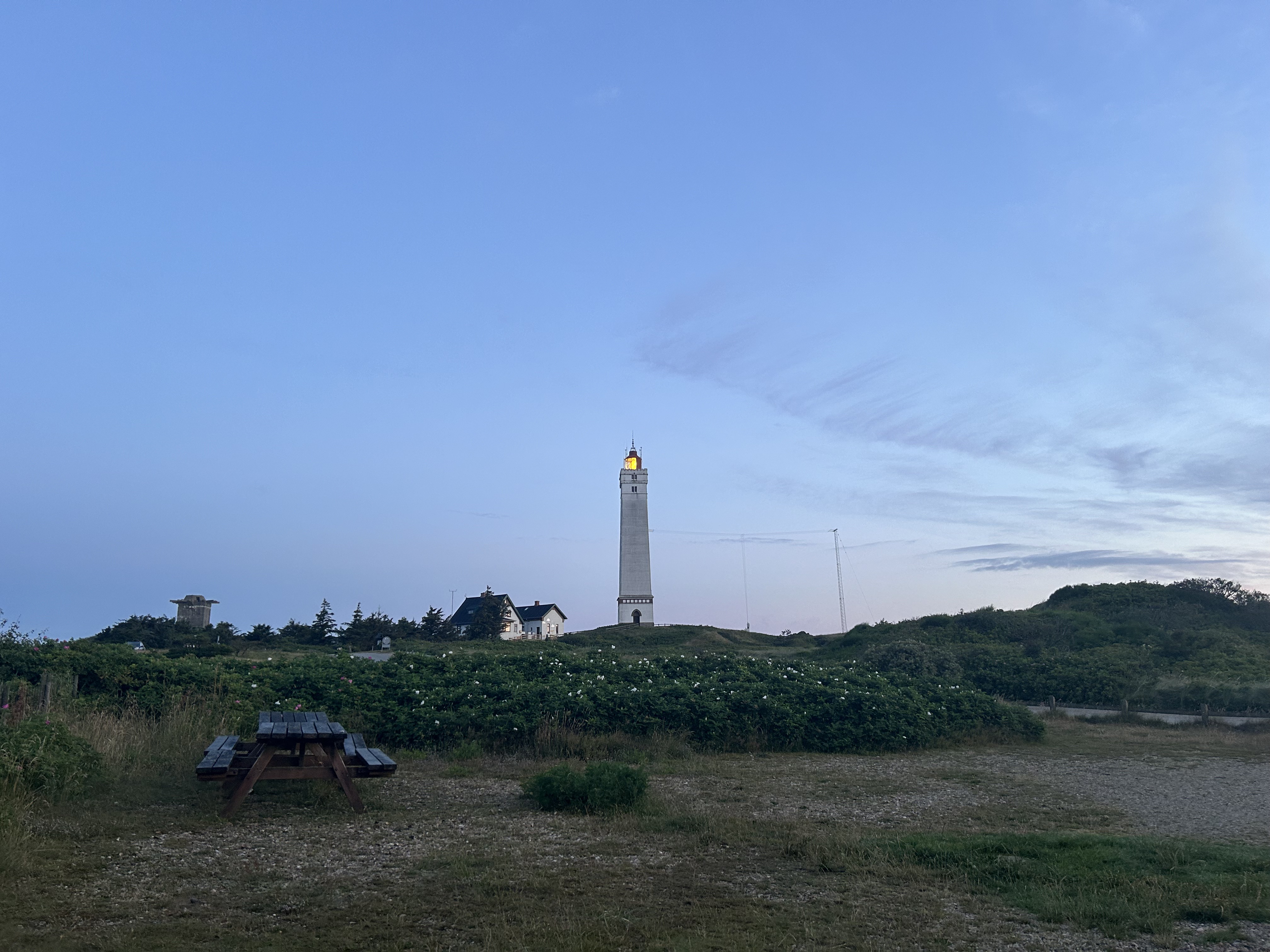
The days are slowly getting shorter, but it doesn’t change how much we enjoy the sunrises.
Current people at the station: Maxim, David and Théotim




